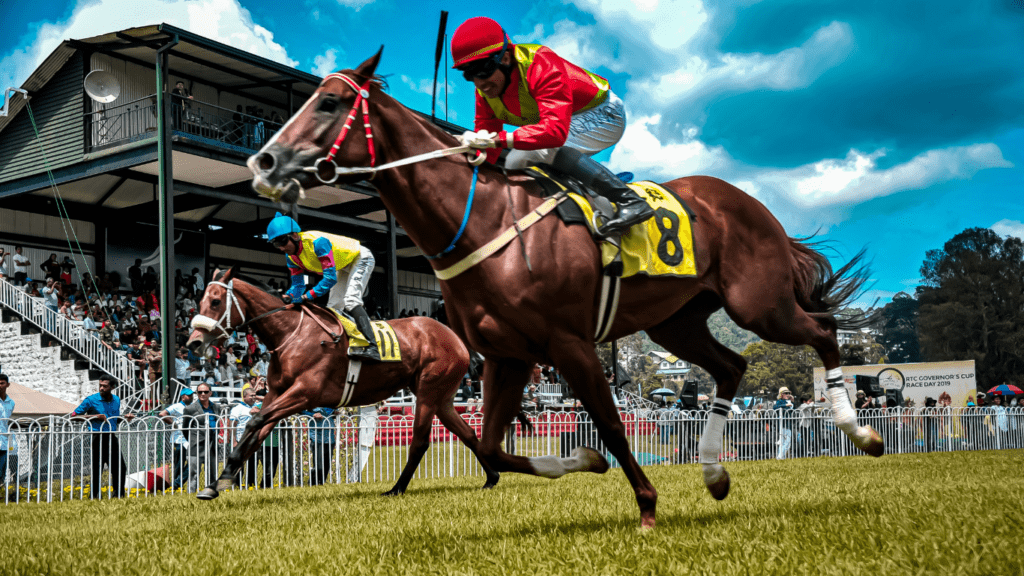What Are Sports Betting Odds?
Odds are the ratios that show the likelihood of an event occurring in sports betting. Bookmakers set these odds to balance the amount of money bet on each possible outcome. Understanding these ratios helps bettors assess potential payouts and risks.
Types of Betting Odds
Three main types of betting odds exist: decimal, fractional, and moneyline. Each type represents the same information differently.
- Decimal Odds: Common in Europe, Australia, and Canada, these odds show the total return for every dollar bet, including the stake. For example, odds of 2.50 mean $2.50 is returned for every $1 wagered.
- Fractional Odds: Common in the UK and Ireland, these odds show the profit relative to the stake. For example, odds of 5/1 mean $5 profit for every $1 wagered.
- Moneyline Odds: Popular in the US, these odds show how much needs to be wagered to win $100 for favorites (negative numbers) or how much is won for a $100 bet on underdogs (positive numbers). For example, -150 means betting $150 to win $100, while +200 means winning $200 for a $100 bet.
How Bookmakers Set Odds
Bookmakers set odds based on probabilities. They consider various factors, including team performance, player injuries, and historical data. Their goal is to attract bets on all possible outcomes, ensuring a profit regardless of the result.
Bookmakers also continuously adjust odds based on betting activity. If more people bet on one outcome, the odds for that outcome drop, while the odds for the opposite outcome increase. This adjustment aims to balance their books.
Interpreting Odds
To interpret odds effectively, grasp the implied probability. Decimal odds can be converted to implied probability with the formula: (1 / Decimal Odds) * 100. For instance, odds of 2.00 have an implied probability of 50%. Fractional odds require the formula: Denominator / (Denominator + Numerator) * 100. For example, 5/1 odds have an implied probability of 16.67%.
Moneyline odds for favorites use the formula: (-Moneyline Odds) / (-Moneyline Odds + 100) * 100. For underdogs, the formula is: 100 / (Moneyline Odds + 100) * 100. For instance, -150 odds indicate a 60% implied probability, while +200 odds show a 33.33% implied probability.
Types Of Betting Odds

Understanding the types of betting odds is essential for interpreting the probabilities and potential payouts. There are three main types: fractional, decimal, and moneyline odds.
Fractional Odds
Fractional odds are traditional in the UK and Ireland. They represent the ratio of the amount won to the stake. For example, if the odds are 5/1, a $10 bet would yield $50 in profit plus the original $10 stake. The formula for implied probability is ( text{Probability} = frac{text{Denominator}}{text{Numerator + Denominator}} ). So, 5/1 odds imply a probability of ( frac{1}{5+1} = 16.67%.
Decimal Odds
Decimal odds are common in Europe, Canada, and Australia. They show the total payout for every $1 staked, inclusive of the original bet. For instance, odds of 6.00 would yield $60 for a $10 bet ($50 profit + $10 stake). Use the formula ( text{Probability} = frac{1}{text{Decimal Odds}} ) to find the implied probability. Odds of 6.00 imply ( frac{1}{6.00} = 16.67% ).
Moneyline Odds
Moneyline odds, popular in the US, use positive or negative numbers to show the amount won on a $100 bet or the stake required to win $100. Positive odds, like +500, mean a $100 bet profits $500. Negative odds, like -200, mean you must bet $200 to win $100. To convert to implied probability, use ( text{Positive Odds} = frac{100}{text{Odds} + 100} ) for positive and ( text{Negative Odds} = frac{-text{Odds}}{text{Odds} + 100} ) for negative. So, +500 implies ( frac{100}{500+100} = 16.67% ) and -200 implies ( frac{200}{200+100} = 66.67%.
How To Read Betting Odds
Reading betting odds might seem tricky, but it’s simple once you grasp the basics. You can decode any sports betting odds by understanding their formats and the information they convey.
Understanding Favorites And Underdogs
In sports betting, favorites and underdogs are essential concepts. Bookmakers assign odds to indicate which team or player they believe has a higher likelihood of winning.
- Favorites: These have lower odds because they have a higher chance of winning. For instance, if Team A has -150 odds, they’re favored, and you need to bet $150 to win $100.
- Underdogs: These have higher odds as their chance of winning is lower. If Team B has +200 odds, they’re the underdog, and a $100 bet will win you $200.
These distinctions help bettors evaluate risk and potential returns.
Calculating Potential Payouts
Potential payouts depend on the type of odds and the stake. Use these methods to calculate possible returns:
- Decimal Odds: Multiplying your stake by the decimal odds gives the total payout. For example, a $10 bet at 2.5 odds results in a $25 payout ($10 x 2.5 = $25).
- Fractional Odds: Divide the fractional odds, multiply by the stake, and add the stake back. A $10 bet at 5/2 odds results in a $25 payout (5/2 = 2.5; $10 x 2.5 + $10 = $25).
- Moneyline Odds: Positive moneyline numbers show the profit on a $100 stake. Negative numbers indicate the stake needed to win $100. For example, with +200 odds, a $100 bet wins $200. With -150 odds, you stake $150 to win $100.
By mastering these calculations, bettors can better assess the value and risk of their bets.
Factors Influencing Betting Odds
Sports betting odds are shaped by various factors that impact the probable outcomes of events. Understanding these elements can help bettors make informed decisions.
Team Performance
Performance levels of teams play a crucial role in determining odds. Teams with consistent wins and strong overall performance often have lower odds, indicating they are favorites. For instance, a team on a winning streak or with high-ranking players usually sees better odds. Bookmakers adjust odds to reflect these strengths and weaknesses.
Injuries
Player injuries significantly affect betting odds. When key players are unavailable due to injury, odds often shift to reflect the team’s weakened lineup. For example, if a star quarterback is injured, the odds may favor the opposing team. Bookmakers reevaluate and adjust to provide accurate reflections of the teams’ current potential.
Historical Data
Historical performance data also influences odds. Teams with a history of success against certain opponents often have lower odds. For example, if Team A consistently beats Team B over several seasons, odds will likely favor Team A in future matchups. Past performance metrics help bookmakers set these odds with more precision.
These factors collectively help in setting realistic odds, allowing bettors to gauge risks and potential returns better. Understanding team performance, injuries, and historical data can provide valuable insights into betting strategies.
Tips For Betting Successfully
To succeed in sports betting, I follow specific strategies and principles. Below, I’ll outline some critical tips to enhance your winning chances.
Research And Analysis
Thorough research and analysis enhance betting success. I study team statistics, player form, and historical data. Following expert opinions and predictions adds valuable insights. Evaluating current news, such as injuries and lineup changes, provides a competitive edge.
Managing Your Bankroll
Managing your bankroll prevents significant losses. I set a budget for betting activities, sticking to it to avoid financial strain. Diversifying bets by allocating smaller amounts to multiple bets minimizes risk. Avoiding chasing losses ensures long-term success.
Avoiding Common Mistakes
Avoiding common mistakes maximizes betting potential. Making emotional decisions often leads to losses. Ignoring valuable data results in uninformed bets. Overestimating knowledge about sports can be detrimental, so I stay humble and continually learn.


 Kelly Osborne was instrumental in building Hype Gamble Match, utilizing her background in digital marketing and content strategy to create a seamless user experience. Kelly’s work in crafting engaging content and optimizing the site’s reach to a wider audience has made the platform accessible to both newcomers and experienced bettors. Her efforts have ensured that the platform’s insights and expert tips reach a diverse and growing user base, enhancing Hype Gamble Match’s reputation in the betting industry.
Kelly Osborne was instrumental in building Hype Gamble Match, utilizing her background in digital marketing and content strategy to create a seamless user experience. Kelly’s work in crafting engaging content and optimizing the site’s reach to a wider audience has made the platform accessible to both newcomers and experienced bettors. Her efforts have ensured that the platform’s insights and expert tips reach a diverse and growing user base, enhancing Hype Gamble Match’s reputation in the betting industry.